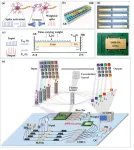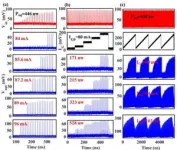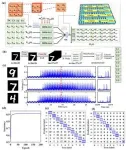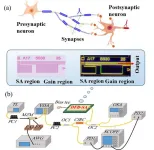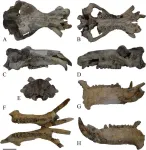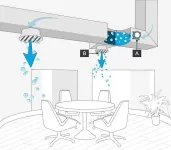Brain science and brain-like intelligence are the cutting-edge science and technology that countries all over the world compete to seize. The rapid rise and vigorous development of emerging fields such as artificial intelligence, 5G/6G, big data, autonomous driving, and the Internet of Things has led to the explosive growth of global data. Due to the memory wall effect, the conventional von Neumann architecture performs low energy efficiency. Electronic processors face speed and energy efficiency bottlenecks and problems. Developing innovative photonic brain-like computing is an effective way to solve the von Neumann bottleneck. Photonic brain-like computing is the interdisciplinary frontier of brain-like computing, artificial intelligence and optoelectronic chips. Utilizing the advantages of high-speed, broadband and multi-dimensional photonic computing, it has great potential application value in photonic neural network accelerators, photonic smart chips, autonomous driving, edge computing, and is expected to promote a new round of industrial revolution.
In recent years, photonic neural networks have developed toward large-scale, reconfigurable, high speed and low power consumption, and are still in the initial stage of development. Especially, it is urgent to break through the nonlinear computing problems in the optical domain.
To solve the nonlinear computing problem of photonic neural networks, photonic integrated synaptic chip based on DFB-SA laser was developed. The intrinsic plasticity of biological neurons was successfully simulated. Under the condition of fixed external synaptic weights, the controllable neuron-like nonlinear response (including temporal integration, excitable threshold and refractory period) can be achieved only by tuning the gain current of DFB-SA laser. The single-channel nonlinear spike activation rate reaches 2GHz (7 orders of magnitude faster than the response rate of biological neurons), and the energy consumption of a single spike is 19.99pJ. By mapping the weight to the gain current of DFB-SA laser, the nonlinear spike activation and linear weighting of the activated spike can be realized simultaneously based on a single DFB-SA laser chip, providing a fully functional neuromorphic computing photonic chip. On this basis, the 4-channel DFB-SA array chip was successfully developed. The hybrid optoelectronic architecture of convolutional spiking neural network was proposed, and the 2×2 spike-based matrix convolution was realized in the optical domain. The hardware-algorithm collaborative computing for convolutional spiking neural network was completed, and the MNIST classification was realized with an accuracy of 87%. It lays an important foundation for the hardware implementation of monolithic integrated large-scale photonic spiking neural networks.
The photonic integrated neuro-synaptic chip based on the DFB-SA laser reported in this paper can perform linear and nonlinear calculation of spiking neural networks at the same time, and has the characteristics of low power consumption, high speed and easy monolithic integration. It is suitable for application scenarios such as large bandwidth, high speed and low delay, and lays a foundation for the realization of integrated deep photonic spiking neural network chips. It is expected to exert its unique competitiveness in data center, edge computing, autonomous driving and other applications.
# # # # # #
Shuiying Xiang is a professor at Xidian University. Her main research direction is photonic neuromorphic computing and photonic spiking neural networks. She has carried out a series of cutting-edge exploration work from basic theories and key technologies to integrated chips and core algorithms of photonic spiking neural network. She presided over several research projects such as the National Key research and Development Program, the National Natural Science Foundation, and so on. In recent years she has published more than 100 papers as the first/corresponding author, in journals such as Optica, Opto-Electronic Advances, Laser &Photonics Reviews, IEEE Transactions on Neural Networks and Learning Systems, Photonics Research and other international mainstream journals. She applied for or authorized more than 20 patents. She has published 3 invited reviews in the field of photonic brain-like computing and optoelectronic chips.
Yuechun Shi is a researcher of Yongjiang Laboratory and Selected by the National Young Talent Program. He is mainly engaged in semiconductor laser array, photonic hybrid integration technology and applications in optical communication, optical computing, optical sensing and other fields. He focused on the basic theory and industrial application of semiconductor optoelectronic devices. He presided the national key research and development projects, the National Natural Science Foundation and other projects. He has published more than 120 papers in the field of information optoelectronics and applied for or authorized more than 20 patents. He has published 2 textbooks of applied optics.
# # # # # #
Opto-Electronic Advances (OEA) is a high-impact, open access, peer reviewed monthly SCI journal with an impact factor of 14.1 (Journal Citation Reports for IF2022). OEA is indexed in SCI, EI, DOAJ, Scopus, CA and ICI databases.
The journal is published by The Institute of Optics and Electronics, Chinese Academy of Sciences, aiming at providing a platform for researchers, academicians, professionals, practitioners, and students to impart and share knowledge in the form of high quality empirical and theoretical research papers covering the topics of optics, photonics and optoelectronics.
# # # # # #
More information: http://www.oejournal.org/oea
Editorial Board: http://www.oejournal.org/oea/editorialboard/list
All issues available in the online archive (http://www.oejournal.org/oea/archive).
Submissions to OEA may be made using ScholarOne (https://mc03.manuscriptcentral.com/oea).
ISSN: 2096-4579
CN: 51-1781/TN
Contact Us: oea@ioe.ac.cn
Twitter: @OptoElectronAdv (https://twitter.com/OptoElectronAdv?lang=en)
WeChat: OE_Journal
# # # # # #
Xiang SY, Shi YC, Zhang YH, Guo XX, Zheng L et al. Photonic integrated neuro-synaptic core for convolutional spiking neural network. Opto-Electron Adv 6, 230140 (2023). doi: 10.29026/oea.2023.230140
# # # # # #
END
